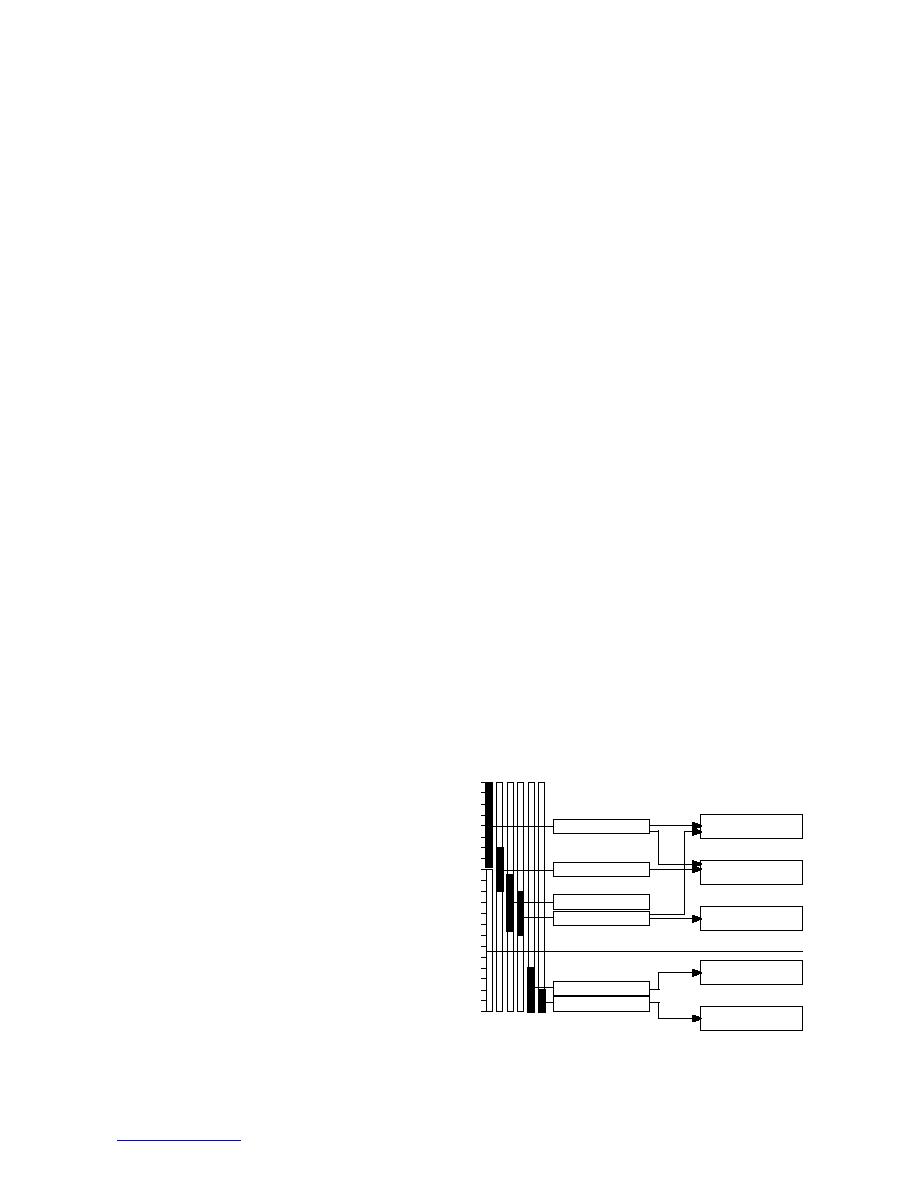
index method for non-rainy periods. The NWSRFS
the snowpack computations. When there are no
approach accounts for several internal processes
internal snowpack processes considered, the sur-
within a one-layer snowpack including a lag for
face energy balance is simply equated to snowmelt
water flow through the pack. On the other hand,
leaving the snowpack. The operational models
the NWSRFS energy balance equations do not
vary from just surface energy budgets, to models
directly allow for forest or solar angle variation,
that consider internal processes in one- or two-
as the SSARR energy-balance equations do.
layer snowpacks (Table 1, Fig. 1). The generalized
SRM and PRMS reflect the use of technologi-
energy balance equations used in SSARR directly
cal developments in the 1980s. SRM developers
allow for forest cover, wind exposure, and solar
(Martinec 1960, 1989) took a pragmatic approach;
exposure through coefficients in the surface energy
they adopted a simple temperature-index method
balance. In many of the operational model
that also relies heavily on snow-covered area
approaches these environmental effects are imbed-
information. SRM is most suitable to basins where
ded in melt factors that must be judiciously
clear skies allow frequent satellite views of the
selected or calibrated. In PRMS adjustments for
snow-covered area. The PRMS algorithm (Leaves-
forest canopy are made for net longwave and
ley et al. 1983, Leavesley 1989) was based on
shortwave radiation. In SNTHERM, adjustment
Obled and Rosse's (1977) two-layer snow model,
for solar exposure is integral to the surface energy
the latter drawing from Anderson's work (1976).
balance, but forest canopy effects on winds and
PRMS came later in the development chronology;
radiation are adjusted externally in the meteoro-
this is reflected in its use of hydrologic response
logical data stream. Similar solar aspect and
units (HRU), a concept that steps toward distrib-
canopy adjustments could be made available to
uted snowmelt modeling by segmenting the land-
SNAP.
scape into land cover types that would melt simi-
Multilayered snowpack schemes were too
larly. The snow algorithm used in PRMS (Obled
numerically intensive to run on computers at the
and Rosse 1977) reflects the observation that the
time these operational models were developed.
rates of change of snowpack conditions in the
SNTHERM is a full mass-energy balance model
surface layer of snow are more rapid than those
initially based on Anderson's mass and energy
in the bulk of the snowpack. PRMS considers
balance model (Anderson 1976), and expanded
more forest effects on snow interception and melt
using mixture theory (Morland 1990) and Col-
and is run within a modular software system at
beck's routines for flow through snow (1972).
the USGS (Leavesley et al. 1992).
SNTHERM models the condition of multiple
snowpack layers and would be the model of choice
when detailed information is desired. A new,
CRREL models compared to
streamlined version of SNTHERM that reduces the
current operational models
SNTHERM and SNAP attempt to be fully gen-
snowpack to a maximum of five layers may be
eralized algorithms that require no calibration.
more suitable to operational hydrology applica-
For example, SNTHERM model validations in
deep Sierra and relatively shallow New England
1958
snowpacks show good model performance with-
out any regional adaptations or calibrations (Jor-
One-layer snowpack,
SSARR, HEC-1
no internal processes
dan and Melloh, in prep). SNAP, a one-layer
1968
model, has less detailed internal processes, mak-
One-layered snowpack,
ing it more time efficient while offering a gener-
NWSRFS
some internal processes
alized approach to water flow through the pack.
SRM
1978
This no-calibration approach to flow routing
Two-layered snowpack,
PRMS
through the pack, though it requires further vali-
some internal processes
dation of its generality, has particular merit in
1988
contrast to using a lag based on curve-fitting at a
Multilayered,
particular lysimeter site.
multiprocess
SNTHERM
The three main differences between the opera-
SNAP
1998
tional and CRREL model approaches are the sur-
Single-layer,
multiprocess
face energy budgets, detail in the snowpack inter-
Figure 1. Chronology of operational snowmelt model
nal processes, and need for calibration. In all
development, including the two CRREL models.
snowmelt models a surface energy budget drives
12
Return to contents



 Previous Page
Previous Page
